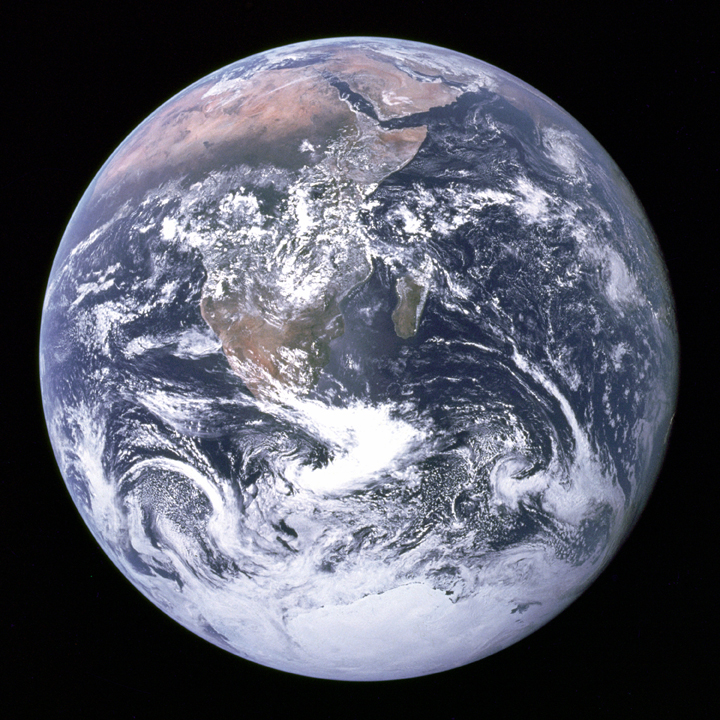NASA has released a stunning image of our home as seen from the moon.

The space agency’s Lunar Reconnaissance Orbiter (LRO) took the composite image — comprised of a series of images using two cameras — while 134 km above Compton crater, found on the far side of the moon.
READ MORE: Get ready for rare Christmas Day full moon
“The image is simply stunning,” said Noah Petro, deputy project scientist for LRO at NASA’s Goddard Space Flight Center. “The image of the Earth evokes the famous ‘Blue Marble’ image taken by Astronaut Harrison Schmitt during Apollo 17, 43 years ago, which also showed Africa prominently in the picture.”
In the high-resolution image, Africa is front and centre with the edge of Brazil poking out from cloud cover to the left. (Click here to see an enlarged version of the image.)
Getting this beautiful composite image wasn’t easy: the series of images was captured on Oct. 12 using two cameras: the Narrow Angle Camera (NAC) — which takes black-and-white images — and the colour Wide Angle Camera (WAC) and all while the spacecraft was travelling more than 1,600 metres per second. Oh, and remember: Earth and the moon were moving, too.

Get daily National news
WATCH: Animation of spacecraft capturing images of Earth and Moon
The image processors had to combine the data from the NAC and WAC cameras and then take each image to stitch them together as well as compensate for a brighter moon and dimmer Earth.
The end result? A staggering image of our blue marble.



Comments